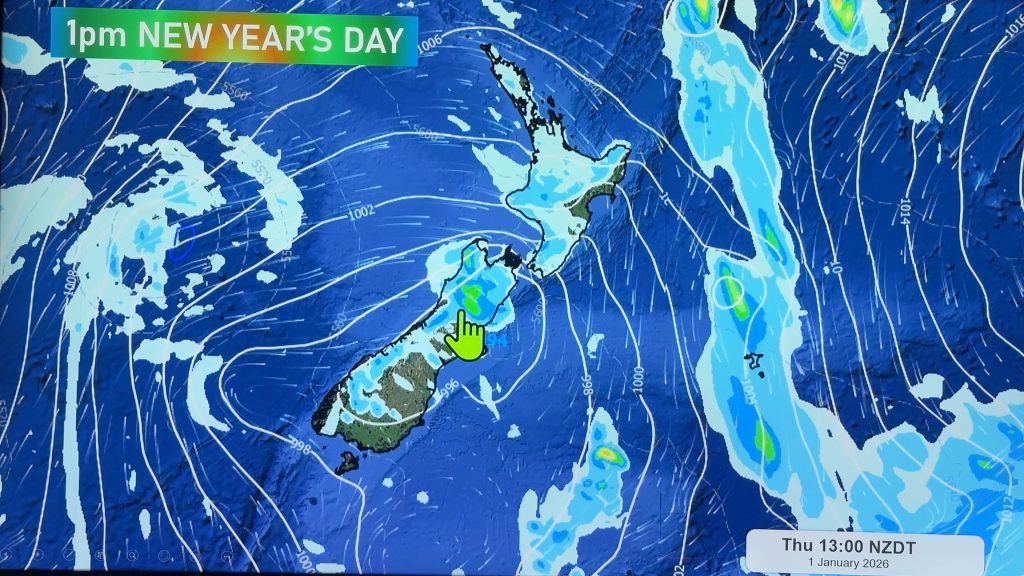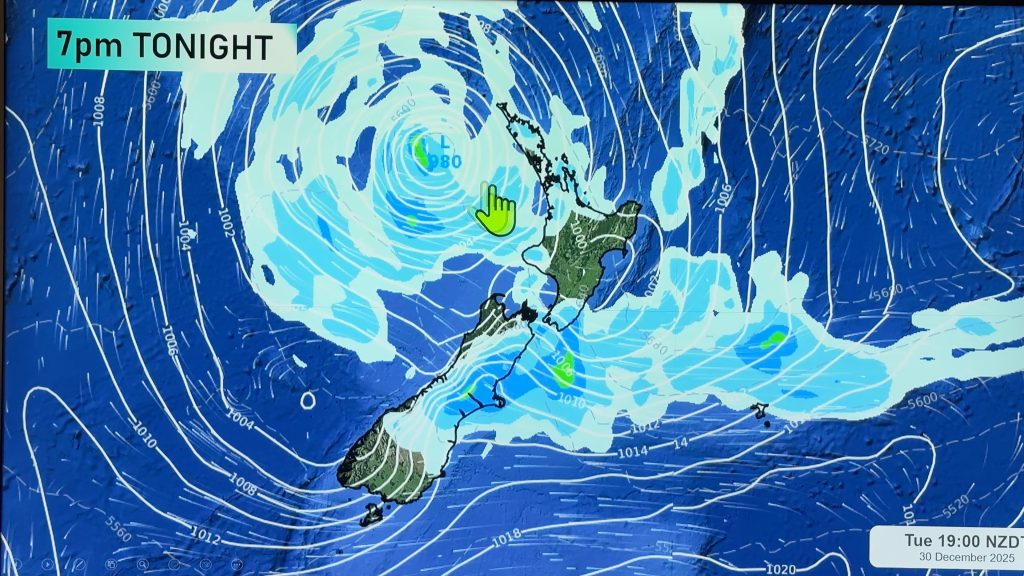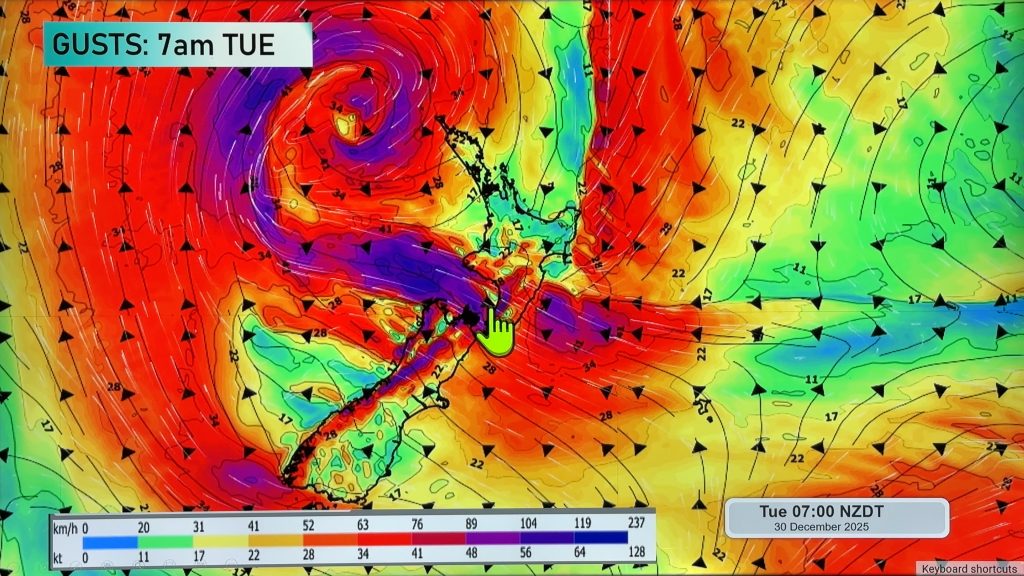Friday’s headlines (x3): Settled today, Risk T/Storms in the north on Saturday, Warm in the east this weekend
30/03/2023 6:00pm

> From the WeatherWatch archives
Here’s what is making the weather headlines today….
SETTLED, REMAINING SHOWERS IN THE EAST CLEAR
Today is largely settled, there is still some cloud and a few showers about eastern extremities to clear but overall it’s looking quite good. Sun returns to many eastern regions today.
A front closes in however so expect rain for the West Coast overnight.
THUNDERSTORMS IN THE NORTH – SATURDAY
A front / westerly quarter airflow brings rain to western regions on Saturday, from afternoon into the evening Auckland and Northland could see thunderstorms and isolated downpours. It’s not a guarantee, just a chance.
The first map below is called the lifted index, once you go below 0 conditions are starting to become unstable, the more negative the number, the more unstable. We can see an area of -2 (the blue shading) moving into Northland and northern Auckland from afternoon.
The second map here is CAPE which stands for convective available potential energy. While there is no key, CAPE figures are between 200 to 400.
Both the lifted index and CAPE are measures of instability, the figures are not overwhelmingly high but show some moderate instability. The images below are from the European ECMWF model, the American GFS model has the lifted index a bit lower at -3 and CAPE figures around 600, so more unstable in other words. It must be said that sometimes especially in the case of New Zealand the weather models don’t always get the surface conditions right, it can often be a little warmer with a touch more moisture meaning there can be more instability then is being suggested.
The lifted index is a measure of instability which is to do with surface conditions (temp + moisture) and what the 500mb level is up to in regards to temperature, that’s roughly 5000m up in the atmosphere but this level does fluctuate a little. The greater the difference between the surface conditions (i.e. warmer temps and high moisture) and the 500mb level (i.e. colder temperatures), usually the lifted index gets more into negative territory, the more negative the number (once again) potentially the more unstable it is.
CAPE is a little more complicated, in terms of a Skew T diagram (Tephigram / weather ballon graph) CAPE is still based on surface temperatures plus moisture but then it utilises the whole temperature profile as you go up high into the atmosphere. CAPE in an unstable atmosphere is the area which forms to the right side of the temperature line on a Skew-T and left side of the lapse rate / TAPP line (Theoretical Air Parcel Plot line), the greater the area between these two the more instability / thunderstorm energy you can have. That’s probably a mouthful for an article on WeatherWatch, for a general explanation on CAPE beyond charts please visit this site here. For a great little video explaining CAPE on a Skew-T graph and all the things mentioned above go here.
If you dare please visit this site here. Play around with the maps, by default the maps are already on the “LI” setting, so lifted index in other words, go to Saturday at 4pm, you’ll see the negative lifted index area over Northland. Next to the “LI” tab is the “CAPE” tab, scroll through the times to see these maps. If you dare to go even further click on an area of high CAPE with the little cross hair cursor you should have, you’ll see a Skew-T graph get generated for that location where you clicked.
The above is what is fun about the weather, once you find out how to look into these things you can start to imagine the possibilities about would could occur. There are other factors when it comes to storms, it’s usually a confluence of scenarios coming together, but the above is a start. Enjoy!

Lifted Index map – Sat 1st April 2023 4:00pm – ECMWF Weatherzone.com.au 
CAPE map – Sat 1st April 2023 4:00pm – ECMWF Weatherzone.com.au
EASTERN REGIONS WARM THIS WEEKEND
As a front clears out to the east of the South Island on Saturday afternoon it should break to sun, this combined with a northerly airflow means temperatures should pick up, potentially getting into the mid twenties. The eastern North Island gets warm temperatures on Sunday.
Parts of the upper North Island are warm this weekend also but highs will be a touch below what they are in the east.
Comments
Before you add a new comment, take note this story was published on 30 Mar 2023.









Add new comment